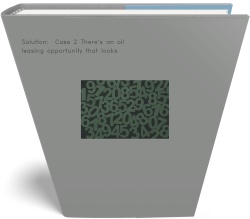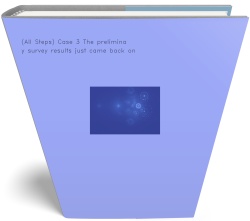Case 1 CASE: Should We Keep or Get Rid of This Supplier? You and your co-worker B. W. Kellerman have been
Case 1
CASE: Should We Keep or Get Rid of This Supplier?
You and your co-worker B. W. Kellerman have been assigned the task of evaluating a new supplier of parts that your firm uses to manufacture home and garden equipment. One particular part is supposed to measure 8.5 centimeters, but in fact any measurement between 8.4 and \(8.6 \mathrm{~cm}\) is considered acceptable. Kellerman has recently presented analysis of measurements of 99 recently delivered parts. The executive summary of Kellerman's rough draft of your report reads as follows:
The quality of parts delivered by HypoTech does not meet our needs. Although their prices are attractively low and their deliveries meet our scheduling needs, the quality of their production is not high enough. We recommend serious consideration of alternative sources.
Now it's your turn. In addition to reviewing Kellerman's figures and rough draft, you know you are expected to confirm (or reject) these findings by your own independent analysis.
It certainly looks like the conclusions are reasonable. The main argument is that while the mean is 8.494, very close to the \(8.5-\mathrm{cm}\) standard, the standard deviation is so large, at $0.103$, that defective parts occur about a third of the time. In fact, Kellerman was obviously proud of having remembered a fact from statistics class long ago, something about being within a standard deviation from the mean about a third of the time. And defective parts might be tolerated \(10 \%\) or even \(20 \%\) of the time for this particular application at these prices, but 30 or \(33 \%\) is beyond reasonable possibility.
It looks so clear, and yet, just to be sure, you decide to take a quick look at the data. Naturally you expect it to confirm all this. Here is the data set:
| 8.50 | 8.50 | 8.50 | 8.50 | 8.50 | 8.50 | 8.50 | 8.50 | 8.50 | 8.51 |
| 8.50 | 8.50 | 8.49 | 8.50 | 8.49 | 8.50 | 8.51 | 8.50 | 8.51 | 8.49 |
| 8.51 | 8.50 | 8.49 | 8.51 | 8.50 | 8.50 | 8.50 | 8.51 | 8.49 | 8.49 |
| 8.51 | 8.31 | 8.80 | 8.50 | 8.78 | 8.50 | 8.51 | 8.50 | 8.50 | 8.49 |
| 8.35 | 8.50 | 8.51 | 8.51 | 8.50 | 8.50 | 8.49 | 8.51 | 8.50 | 8.50 |
| 8.50 | 8.50 | 7.78 | 8.49 | 8.50 | 8.50 | 8.50 | 8.50 | 8.50 | 8.49 |
| 8.51 | 8.49 | 8.37 | 8.49 | 8.50 | 8.15 | 8.50 | 8.50 | 8.49 | 8.51 |
| 8.49 | 8.50 | 8.51 | 8.49 | 8.49 | 8.50 | 8.50 | 8.50 | 8.50 | 8.50 |
| 8.51 | 8.50 | 8.50 | 8.50 | 8.51 | 8.46 | 8.50 | 8.50 | 8.50 | 8.50 |
| 8.49 | 8.50 | 8.90 | 8.51 | 8.49 | 8.49 | 8.50 | 8.51 | 8.50 |
Discussion Questions
1 Are Kellerman's calculations correct? These are the first items to verify.
2 Take a close look at the data using appropriate statistical methods.
3 Are Kellerman's conclusions correct? If so, why do you think so? If not, why not and what should be done instead?
Deliverable: Word Document




![[All Steps] Chapter 6 46. Thirty percent of the population in [All Steps] Chapter 6 46. Thirty percent](/images/solutions/MC-solution-library-81031.jpg)
![[See Solution] Chapter 10 62. Refer to the Real Estate data, which reports [See Solution] Chapter 10 62. Refer to](/images/solutions/MC-solution-library-81032.jpg)

